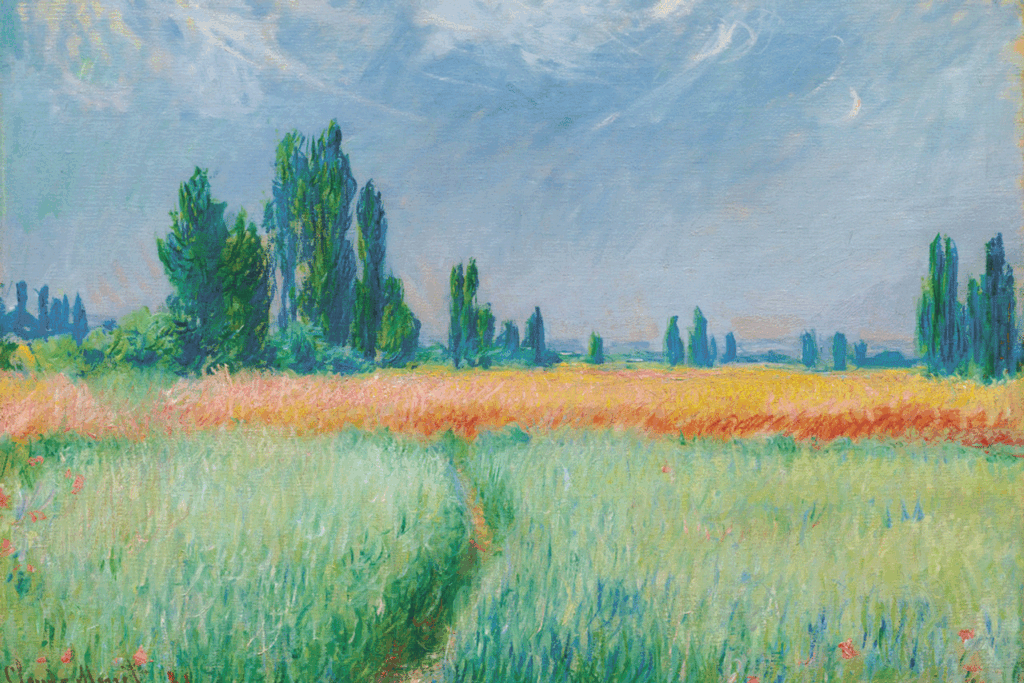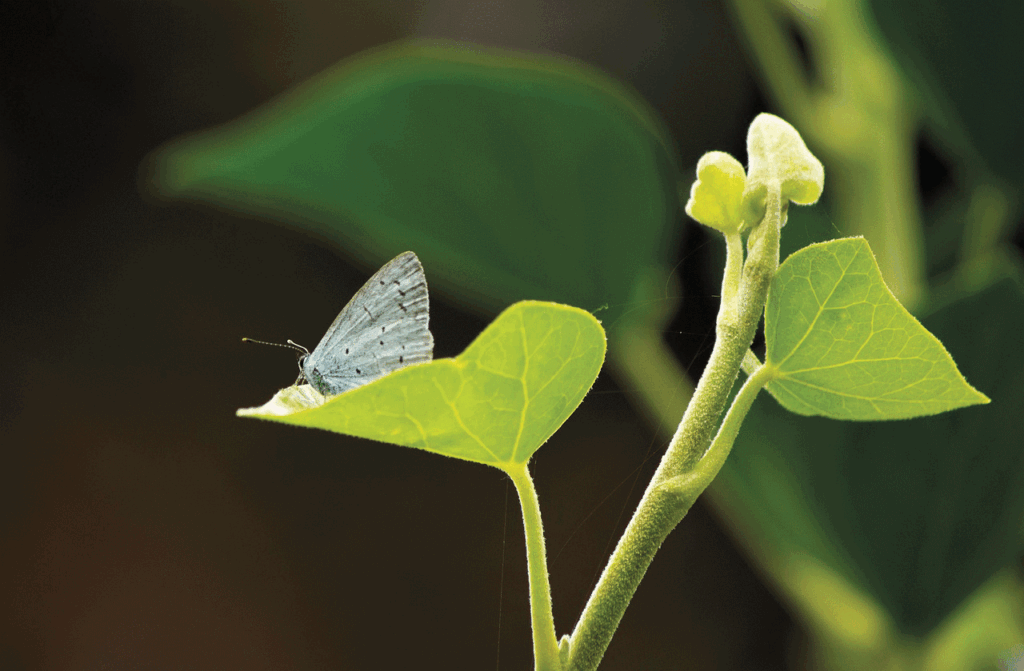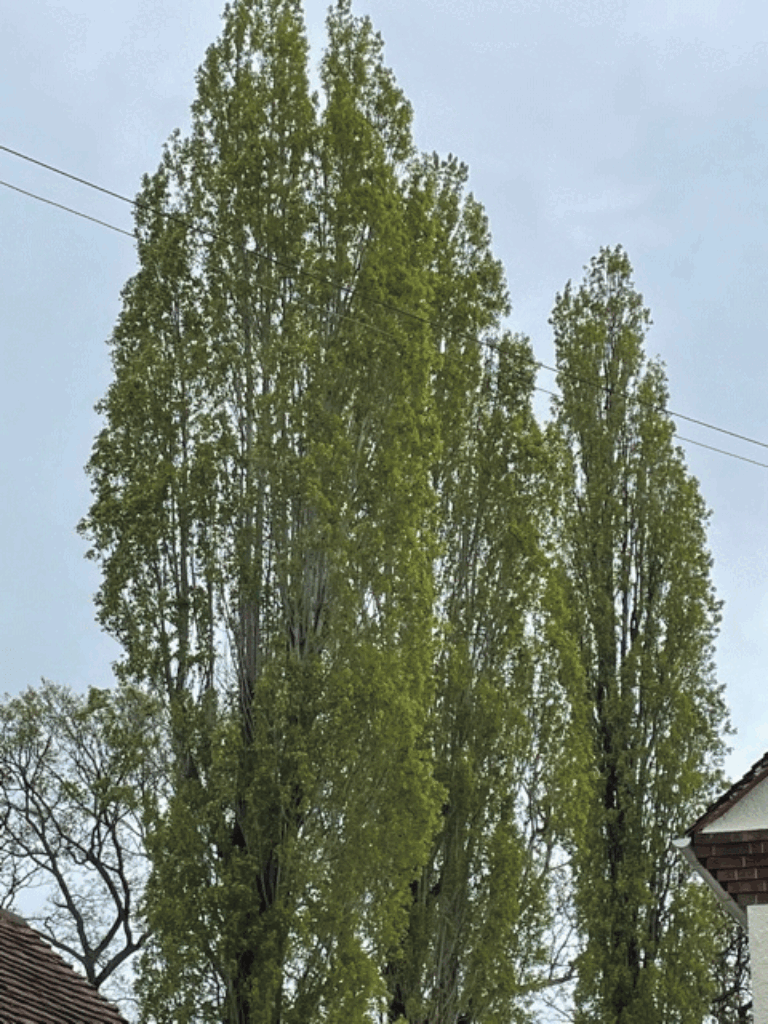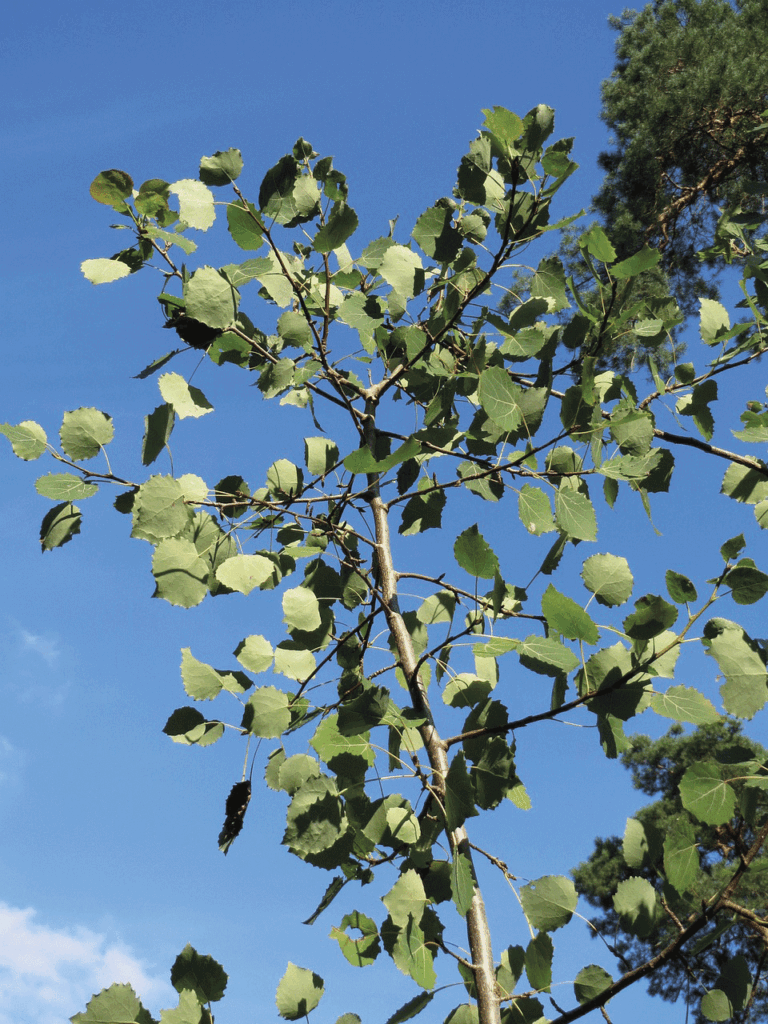
By Miki Marks
If you walk along New Park Road towards Cranleigh Mead you will spot on the left side what remains of a row of stately Lombardy poplars – Populus nigra italica or sometimes inelegantly called ‘Po Poplars’ after the river in Italy where they particularly thrive. They were introduced to this country in the mid 18th century, and immediately became fashionable – both for landowners and for painters. The trees were valued for their vigour and utility as a windbreak. They are the fastest growing hardwood in Britain. They appear in Constable’s landscapes from 1805 onwards. The Impressionists made much use of their elegant vertical lines, and their contrast with bushier trees in the landscape.

This variety of poplar is very much part of the landscape of northern Italy, France and Belgium. The story is that these poplars were extensively planted in France along roads under an edict of Napoleon to provide shade for marching troops in their heavy uniforms – and these routes are sometimes referred to as “Routes Napoleon”. Anyone who has driven by car along one of these roads will have noticed the strange disorientating feeling of the rapid sequence of light/shade/light/shade – known as a stroboscopic effect.
There is speculation that because the name Populus appears to have a common root with the word ‘populance’, that it was chosen by the French Revolutionaries after the Storming of the Bastille in 1789 as a symbolic ‘Liberty Tree’. The French philosopher Jean Jacques Rousseau’s theories about natural freedom and the equality of mankind fed into revolutionary ideas of the times. He died in 1778 and was buried on the appropriately named Ile des Peupliers and his tomb surrounded by tall, slim poplars became a symbol of liberty, fraternity and equality.
There are many varieties of poplar. You can find a large balsam poplar in Avenue Road, Cranleigh; once that road was lined with these trees. In the spring the scent of the buds is delicious – called the Balm of Gilead.
The Aspen is Populus tremula – so named because the leaves never stop moving, even on a windless day.
I am particularly fond of the white poplar with its curious diamond studded grey bark and delicate silvery, felted leaves.
Poplar wood has fire retardant properties, which is why it was extensively planted as a timber crop; it was the best wood to make matches and bellows and less likely to singe beards and fingers when lighting fires!
The 17th century diarist, John Evelyn – whose family were based not far from here, in Wotton – was one of the first to write about wood management. His famous book Sylva; or a discourse on Forest Trees and the Propagation of timber advocated the planting and replacement of trees. Wood was intensively used in this area for the local glass and iron industries. Timber was also used for houses and ships – and the Evelyn fortune was made in manufacturing gunpowder along the Tillingbourne – and industry voracious in its consumption of wood.

Evelyn was a talented landscape designer and gardener. He also had an estate in Deptford which he let out to Peter the Great. The Russian Tsar, wanted to re-organise his country along Western lines. He visited Britain to study our navy. It was whilst at Evelyn’s estate in Deptford that he behaved like a vandal – ruining the flower beds and charging through the prized holly hedges with a wheelbarrow. Evelyn described the Tsar as a ‘nastie fellow’.
I was excited to see a small blue butterfly in my garden a few times during May. Butterfly recognition is a skill I hope to acquire – but I asked for help to identify this particular one. I realised, with some disappointment that it could not be the rare small blue, because they depend entirely on kidney vetch, which doesn’t grow round here. Some butterflies are very specific in their food requirements, and this is a dangerous survival strategy.
The little blue beauty I saw is almost certainly a Holly blue – Celastrina argiolus. There are two broods a year. The first overwinters as a pupa and emerges in April or May. Eggs are laid singly on the underside of Holly flower buds, which they feed on, caterpillars hatching in a week. The pupa is attached to the leaves and a new generation of adults emerge in July. This time they select Ivy for its eggs – and it is this batch that overwinter. Much better to hedge one’s bets.













